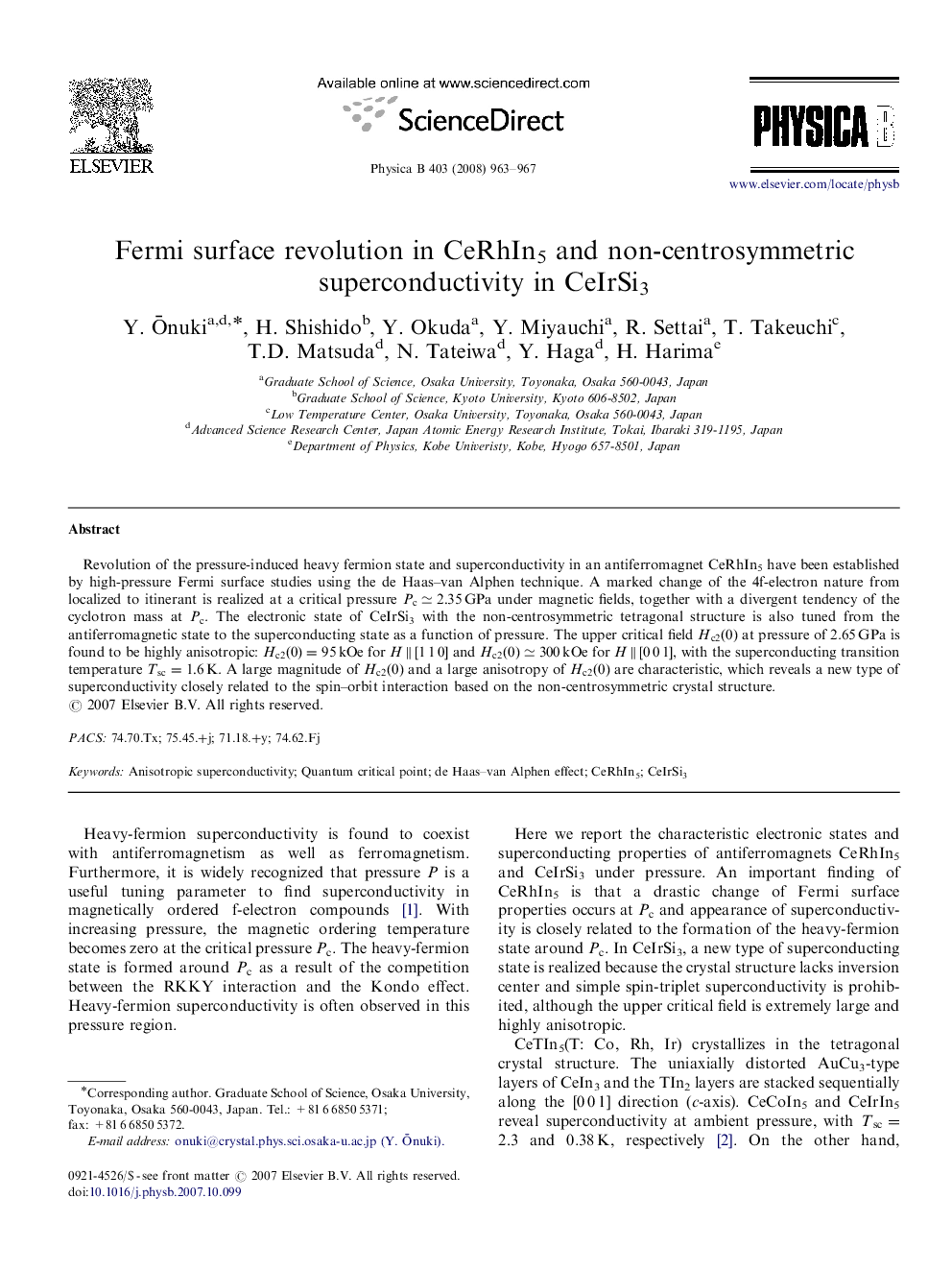| Article ID | Journal | Published Year | Pages | File Type |
|---|---|---|---|---|
| 1814553 | Physica B: Condensed Matter | 2008 | 5 Pages |
Revolution of the pressure-induced heavy fermion state and superconductivity in an antiferromagnet CeRhIn5 have been established by high-pressure Fermi surface studies using the de Haas–van Alphen technique. A marked change of the 4f-electron nature from localized to itinerant is realized at a critical pressure Pc≃2.35GPa under magnetic fields, together with a divergent tendency of the cyclotron mass at PcPc. The electronic state of CeIrSi3 with the non-centrosymmetric tetragonal structure is also tuned from the antiferromagnetic state to the superconducting state as a function of pressure. The upper critical field Hc2(0)Hc2(0) at pressure of 2.65 GPa is found to be highly anisotropic: Hc2(0)=95kOe for H∥[110] and Hc2(0)≃300kOe for H∥[001], with the superconducting transition temperature Tsc=1.6K. A large magnitude of Hc2(0)Hc2(0) and a large anisotropy of Hc2(0)Hc2(0) are characteristic, which reveals a new type of superconductivity closely related to the spin–orbit interaction based on the non-centrosymmetric crystal structure.
